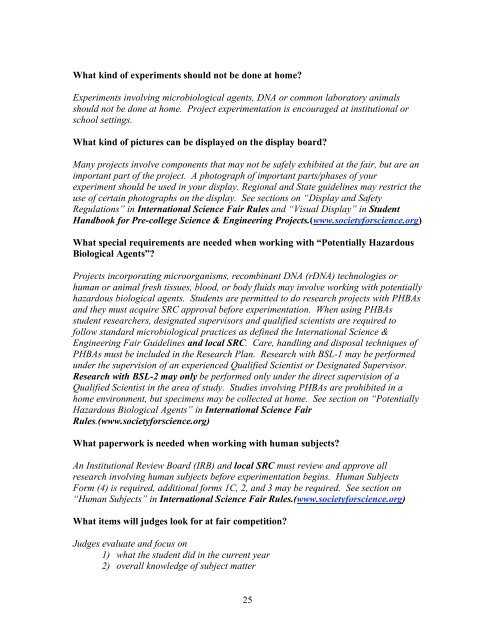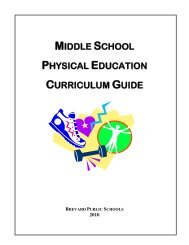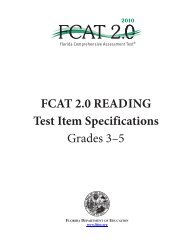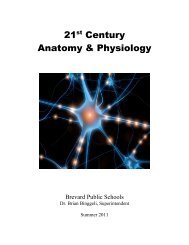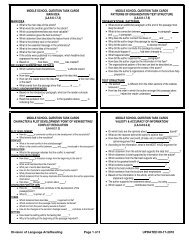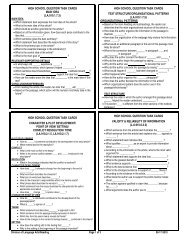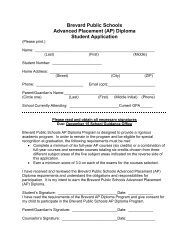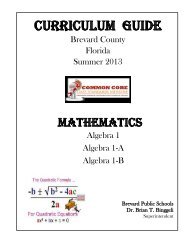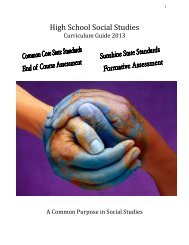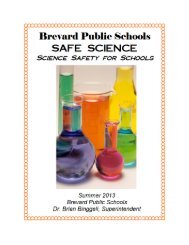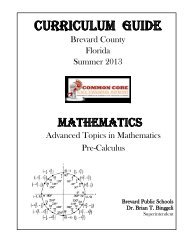Science Research Program Guide - Secondary Programs Home ...
Science Research Program Guide - Secondary Programs Home ...
Science Research Program Guide - Secondary Programs Home ...
Create successful ePaper yourself
Turn your PDF publications into a flip-book with our unique Google optimized e-Paper software.
What kind of experiments should not be done at home?<br />
Experiments involving microbiological agents, DNA or common laboratory animals<br />
should not be done at home. Project experimentation is encouraged at institutional or<br />
school settings.<br />
What kind of pictures can be displayed on the display board?<br />
Many projects involve components that may not be safely exhibited at the fair, but are an<br />
important part of the project. A photograph of important parts/phases of your<br />
experiment should be used in your display. Regional and State guidelines may restrict the<br />
use of certain photographs on the display. See sections on “Display and Safety<br />
Regulations” in International <strong>Science</strong> Fair Rules and “Visual Display” in Student<br />
Handbook for Pre-college <strong>Science</strong> & Engineering Projects.(www.societyforscience.org)<br />
What special requirements are needed when working with “Potentially Hazardous<br />
Biological Agents”?<br />
Projects incorporating microorganisms, recombinant DNA (rDNA) technologies or<br />
human or animal fresh tissues, blood, or body fluids may involve working with potentially<br />
hazardous biological agents. Students are permitted to do research projects with PHBAs<br />
and they must acquire SRC approval before experimentation. When using PHBAs<br />
student researchers, designated supervisors and qualified scientists are required to<br />
follow standard microbiological practices as defined the International <strong>Science</strong> &<br />
Engineering Fair <strong>Guide</strong>lines and local SRC. Care, handling and disposal techniques of<br />
PHBAs must be included in the <strong>Research</strong> Plan. <strong>Research</strong> with BSL-1 may be performed<br />
under the supervision of an experienced Qualified Scientist or Designated Supervisor.<br />
<strong>Research</strong> with BSL-2 may only be performed only under the direct supervision of a<br />
Qualified Scientist in the area of study. Studies involving PHBAs are prohibited in a<br />
home environment, but specimens may be collected at home. See section on “Potentially<br />
Hazardous Biological Agents” in International <strong>Science</strong> Fair<br />
Rules.(www.societyforscience.org)<br />
What paperwork is needed when working with human subjects?<br />
An Institutional Review Board (IRB) and local SRC must review and approve all<br />
research involving human subjects before experimentation begins. Human Subjects<br />
Form (4) is required, additional forms 1C, 2, and 3 may be required. See section on<br />
“Human Subjects” in International <strong>Science</strong> Fair Rules.(www.societyforscience.org)<br />
What items will judges look for at fair competition?<br />
Judges evaluate and focus on<br />
1) what the student did in the current year<br />
2) overall knowledge of subject matter<br />
25


